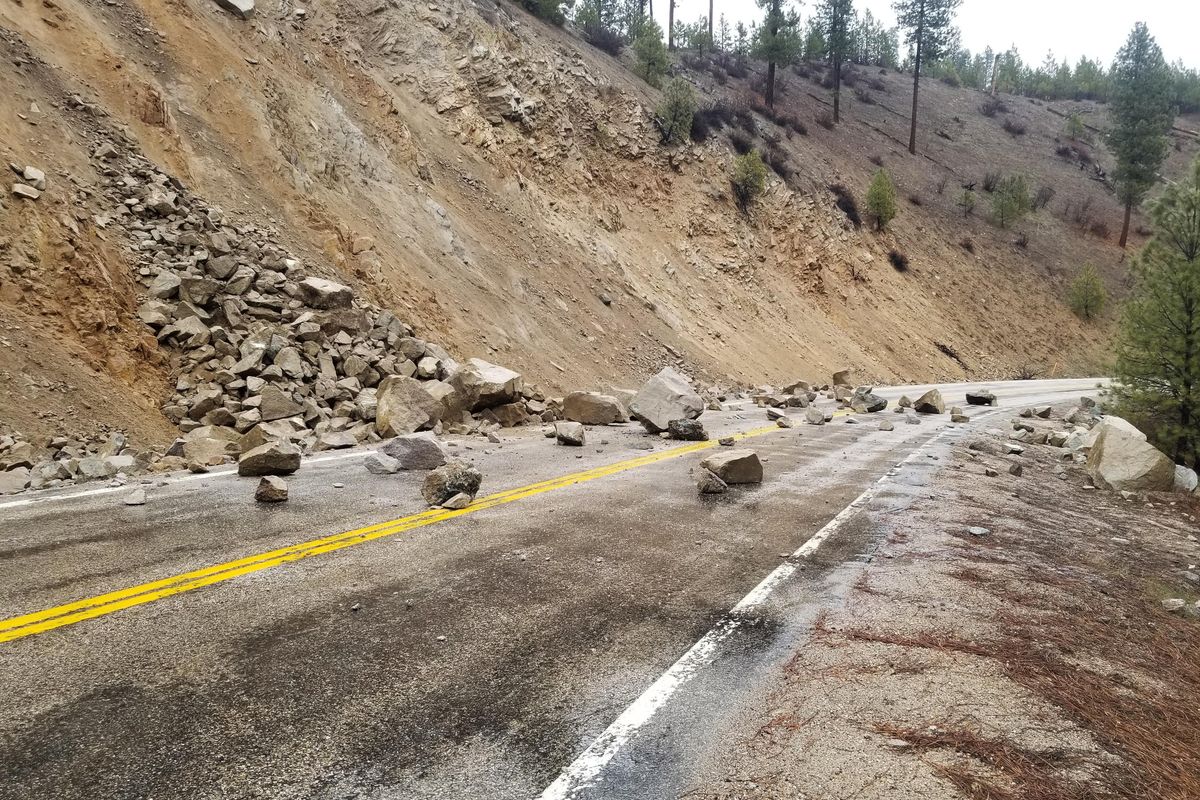6.5-magnitude earthquake in southern Idaho felt in Spokane

Spokane shook Tuesday afternoon after a magnitude 6.5 earthquake hit southern Idaho, about 80 miles northeast of Boise.
More than 2 million people live in the region that could feel the Idaho quake, according to the United States Geological Survey, with reports of shaking coming from as far away as Helena, Salt Lake City and Calgary, Alberta.
The USGS measured the earthquake at a depth of 10 miles below Earth’s surface just before 5 p.m.
Numerous people in the Spokane and Coeur d’Alene areas went to social media with reports of feeling the quake on Tuesday. Others voiced frustration and confusion with somehow missing it.
North Spokane resident Jeff DeBray was sitting on the couch working on his computer when his eye caught the reflection in his TV screen – his couch appeared to be shaking. And then he noticed a light fixture was swinging.
DeBray, who is from Montana and had never felt an earthquake, thought he was going crazy as his home shook for a few seconds.
“But then I was just looking online afterward,” DeBray told The Spokesman-Review.
He thought, “ ‘Oh my gosh, I’m not the only one.’ ”
There were no reports of damage in Spokane as of about 5:40 p.m., according to a tweet from Spokane Fire Chief Brian Schaeffer. He said people should call 911 with reports of gas leaks and unstable structures.
DeBray said friends east of Spokane and in Coeur d’Alene also reported feeling the earthquake.
Ruth Robbins-Dahlin said she was sitting in her Liberty Lake home when her daughter and husband started to feel the earthquake. They all experienced the 6.8-magnitude earthquake that struck north of Olympia in 2001, causing billions in damage and injuring hundreds.
“I thought maybe we were imagining things,” Robbins-Dahlin wrote in a social media message. “It was my grandson’s first earthquake.”
Post Falls resident Hailey Zwanzig, a graphic designer, was creating an advertisement while working from home when the earthquake hit, but it took her fiance, Logan Sumner, pointing out their swinging light fixtures for her to notice. Then her phone started flooding with messages from co-workers, and about half of them said they also missed it.
“Either I was so sucked into my work that I was dead to the world or I really am just that unobservant,” Zwanzig said in a social media message. “When I said I didn’t feel it he (Logan) was shocked.”
The center of the quake was located about 45 miles west of Challis, Idaho – and it wasn’t the first time the town had felt one.
The largest earthquake to hit Idaho took place there in 1983, killing two children who were walking to school and causing an estimated $12.5 million in damage across Challis and nearby Mackay.
President Ronald Reagan later declared the 7.0-magnitude quake a major disaster, and aftershocks were felt there for months.
A 5.4-magnitude aftershock recorded 10 months after that event was later dubbed the Borah Peak earthquake.
Lucy Jones, a seismologist at Caltech who holds a doctorate in geophysics and founded the Dr. Lucy Jones Center for Science and Seismology, said the Idaho region has an earthquake of about Tuesday’s size every 30 or 40 years.
The 1983 quake was along what scientists call a “normal fault,” with the quake causing vertical movement, she said. Tuesday’s quake appeared to be on an unmapped “strike-slip fault,” causing mostly horizontal movement along the fault line.
“This is one that wasn’t obvious enough to be mapped before now,” Jones said.
Unmapped faults of this size are rarer in highly populated areas like California, she said, but in sparsely populated and remote regions like southern Idaho they’re less likely to cause damage and less likely to be a focus of geologists and seismologists.
Residents in the region will likely continue to feel aftershocks, she said. The area had already recorded five aftershocks within the first hours after the 6.5 earthquake.
“An aftershock is just an earthquake, but it happens at a time that doesn’t surprise us,” she said. “They do every bit as much damage.”
A series of mild to moderate 3.7- and 4.1-magnitude earthquakes hit north Spokane in 2001. Those were an early sign of an active earthquake fault that geologists have named the Spokane Fault.
People in an earthquake should drop to the floor and cover their heads with their arms, she said.
“Get to the floor before the earthquake throws you there, and if you have a table nearby, get under it and hold onto it,” Jones said. “Running in an earthquake is incredibly dangerous – people die from running in an earthquake. Just get down and try to cover.”
The shaking didn’t interrupt work in the emergency department at a hospital in Blaine County, a region of Idaho with the highest per-capita rates of known COVID-19 cases in the nation outside of New York City and surrounding counties
“It felt like a wave going through the ground, so I knew right away what it was. It just felt like waves going through the ground,” Marcus Smith, an emergency room health unit coordinator at St. Luke’s Wood River Medical Center in Ketchum, Idaho, told the Associated Press.
The earthquake is added stress during an already stressful time for the region, but Smith said everything seemed fine, for now.
“Until the next one, I guess,” Smith said. “I mean, that’s what we do. We’re all good.”
Brett Woolley, a restaurant owner in Stanley, said he heard earthquake coming before he felt it.
“I heard the roar, and at first it sounded like the wind, but then the roar was tremendous,” Woolley told the Associated Press about 10 minutes after the earthquake.
“The whole house was rattling, and I started to panic. I’m sitting here perfectly still and the water next to me is still vibrating.”
The Associated Press contributed to this report.